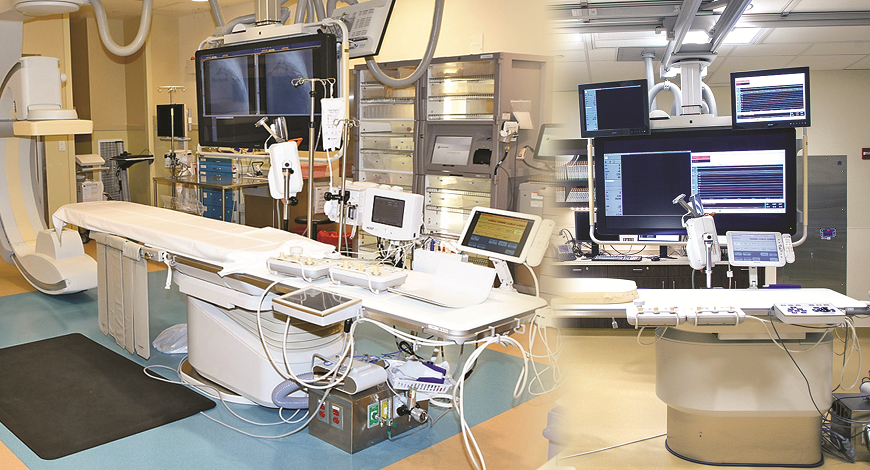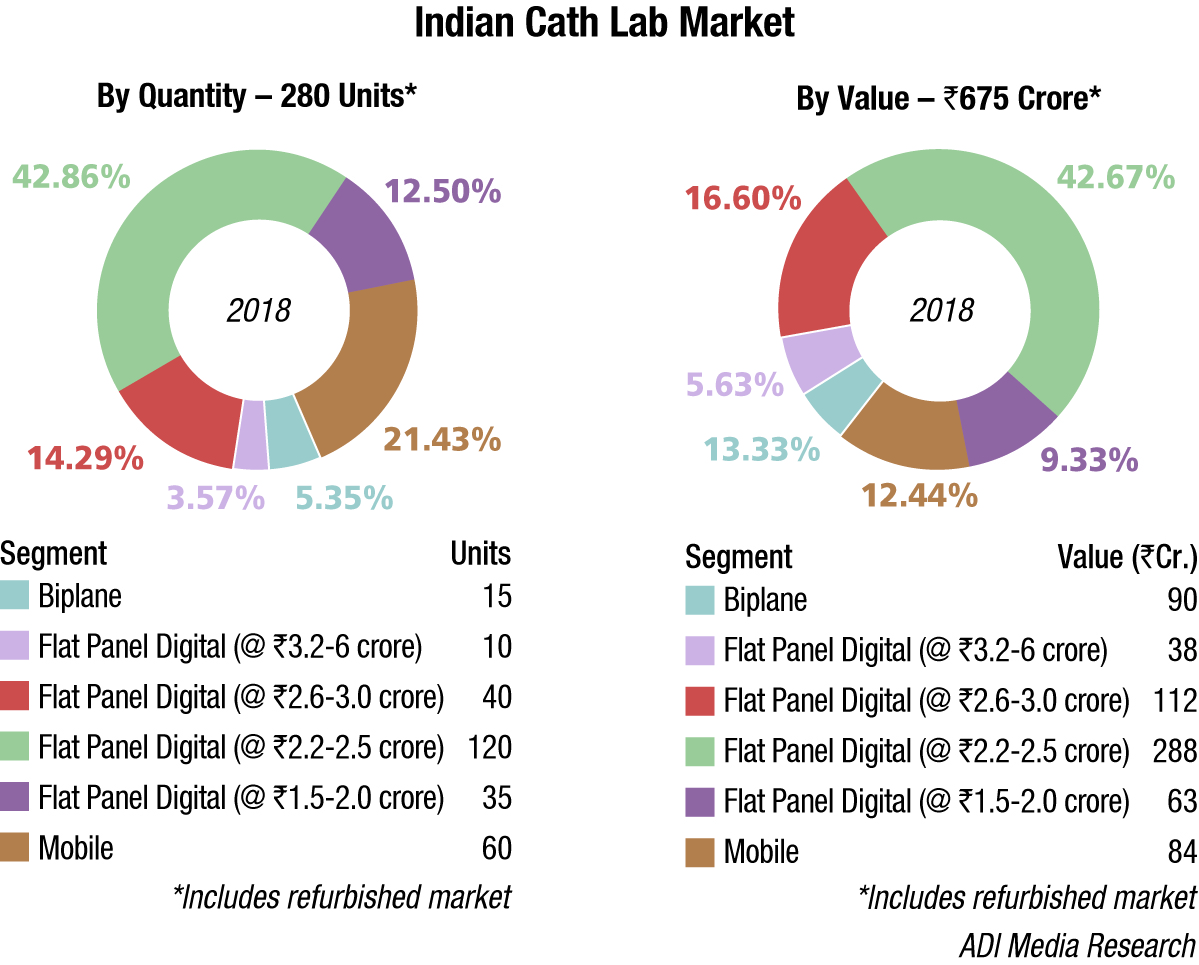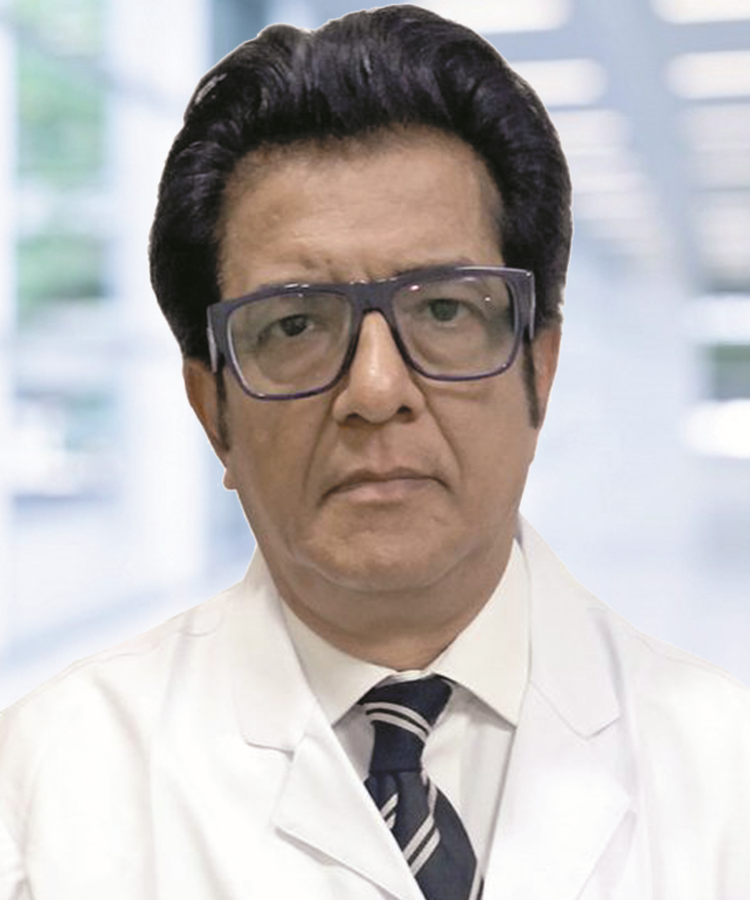Cath Labs
Cath Labs – Finding Value in Technologies

Cardiac catheterization has evolved as appropriate-use criteria and value-based care have continued to advance in the healthcare system. This once go-to procedure is now being replaced by new methods and less invasive techniques.
Cardiac catheterization is one of the most widely performed cardiac procedures. It is an undeniable fact that the move to value-based care is changing cardiology. Catheterization, in particular, has evolved as an appropriate-use criteria (AUC) and value-based care have continued to advance in the healthcare system. This once go-to procedure is now being replaced by new methods and less invasive techniques. Years ago, it was common for the cath lab to be the first stop for patients experiencing symptoms of cardiovascular disease. It was a valuable diagnostic procedure with solid reimbursements and relatively little oversight from payers. Today, the rules have changed.
The industry is moving to non-invasive techniques and are increasingly using new non-invasive diagnostic tools as a way to mitigate lower reimbursements, penalties, and improve patient care. Cath is still an essential tool for both patients and cardiologists, but now physicians want more evidence and clarity before ordering the test. Obtaining proof non-invasively that the disease exists has now become step one in the process. The impetus behind these changes makes sense on a number of levels.
Indian market
In 2018, the Indian cath labs market is estimated as Rs 675 crore, at 280 units. The biplane segment continues to be a premium segment, procured only by a handful of institutions. In the flat panel digital segment, the systems with unit price in the vicinity of Rs 2.5 crore dominate with an approximate 43 percent market share. The refurbished segment, estimated to have a 10 percent share, is largely catered to by Philips, Siemens and Agfa, and each company has one model which is extremely popular. The mobile segment is catered to primarily by Allengers, GE, Philips, Zhiem, and Schiller.

The government, which opts for top-of-the-line systems was aggressive in 2018. AIIMS procured 40 systems, Andhra Pradesh under PPP scheme 5 units, ESIC 10 units, Maharashtra and Kerala 4 units each, and Tamil Nadu 10 units.
With demand emanating from the tier 3 and 4 cities, who do not have the budgets for setting up a Rs 6-7 crore centre, the challenge for the vendors remains to cater to this segment.
Global market
The global cath labs market is likely to grow at a CAGR of 6.9 percent resulting in global revenue of USD 21.88 billion by 2022.
Major players operating in the global market include GE Healthcare, Philips Healthcare, and Siemens. Other players include Toshiba, Shimadzu, Schiller, Zhiem, Medtronic, Boston Scientific Corporation, Terumo Corporation, Smith & Nephew, Johnson & Johnson, Cook Medical, Canon Medical, Edwards Life Sciences, B. Braun, CR Bard, and Teleflex Incorporated.
2018* |
||
|---|---|---|
| Tier I | Tier II | Tier III |
| Philips, GE, and Siemens | Allengers and Toshiba | Shimadzu, Schiller, Zhiem, Skanray, and Alfa |
| *Vendors are placed in different tiers on the basis of their sales contribution to the overall revenues of the Indian Indian cath lab market. | ||
| ADI Media Research | ||
The development of advanced minimally invasive procedures and an increase in adoption of the same in interventional cardiology is likely to drive the global market in the future.
Moreover, the development of hybrid procedures is another trend that is likely to gain acceptance across the industry in the coming years.
An increasing number of people with heart diseases around the world, rise in population, and growth of pediatric heart diseases are some of the other factors that are expected to push the progress of the overall interventional cardiology market in a growth trajectory.
Despite the optimistic growth forecast of the interventional cardiology market, some restraining factors must be taken into consideration while analyzing the overall market scenario. Post-procedural complexities such as blood clotting or thrombosis, uneven drug release, and varying rates of degradation are some of the factors that may hinder the growth of the market.
Moreover, the market scenario of interventional cardiology is very dynamic. The intensity of competition among companies is reasonably high. Price cuts offered by small and medium players on their devices compel established players to reduce their profit margins, thereby leading to an inhibition of the research and development efforts owing to lack of funds. This may become a strong restraining factor in the extended long term.
Vendor update
In February 2019, Canon Medical Systems USA Inc. has introduced a new angiography configuration featuring its Alphenix Sky+C-arm and hybrid catheterization tilt/cradle table for interventional procedures with its Aquilion One/Genesis Edition computed tomography (CT) system. The new pairing, called the Alphenix 4-D CT, allows clinicians to efficiently plan, treat, and verify in a single clinical setting. The new family combines dose optimization technologies, enhanced workflow, and innovative features to help clinicians provide patients with safe and fast treatment.
In January 2019, Philips announced the launch of Azurion with FlexArm, designed to enhance positioning flexibility for image-guided procedures. Azurion with FlexArm includes a set of innovations that make it easier for the clinician to perform imaging across the whole patient in both 2-D and 3-D.
The system is ideally suited for hybrid operating rooms (ORs) that cater to multiple specialties in one room, such as a combination of surgical and endovascular procedures.
In September 2018, Shimadzu Medical Systems USA and Change Healthcare have entered into a partnership, through which Shimadzu will offer Change Healthcare Cardiology Hemo, along with its Trinias line of angiography systems. Trinias is a single-plane system available in floor or ceiling mounts or as a bi-plane mounted system, offering what Shimadzu calls unmatched design movements around the patient. Change Healthcare Hemo is the integrated hemodynamic monitoring system for cardiology departments that need to aggregate hemodynamic data, waveforms, and images in one cardiac patient record. The combined offering is now available through Shimadzu and its reseller network.
Technology Trends
CVIS-Hemodynamic Integration. In the cath lab, the hemodynamic system is at the core of all procedures, including cardiac procedures, interventional radiology, vascular surgery, and electrophysiology (EP). Newer-generation hemodynamic monitoring systems have interfaces to help document all types of procedures. This may include charting, device usage, specific site identification, fractional flow reserve (FFR), sheath exchanges, and automatic timers to record balloon inflation time and pressures applied. The data gathered by the system helps speed workflow by automatically generating reports and auto filling report fields and billing information. Interfaces also display and record waveforms. Many features of these systems can be customized to each cath lab’s needs. Two key requirements for today’s cardiovascular information systems (CVIS) are solid integrations with both enterprise-wide EMR systems and the cath lab’s hemodynamic monitoring system. Both will enable increased efficiency, faster workflows, and the ability to meet the need for increased data integration requirements. Tight integration between CVIS and the hemodynamic system eliminates the need to manually tabulate or re-enter data that is already stored in an electronic format. With a good CVIS-hemodynamic system interface, diagnostic cath reports can be completed after a procedure in about five minutes. Interventional reports can be completed within roughly 10–15 minutes, with the hemodynamic measures automatically populating some of the report fields. Automatic transfer of hemodynamic data also helps shorten the manual process of transferring this data into registry-reporting templates for the National Cardiovascular Data Registry (NCDR) CathPCI database.
Advances to Lower Radiation Dose. As interventional procedures become more complex, imaging and procedural times naturally increase. To compensate for the higher imaging X-ray doses involved, vendors have developed a new generation of angiography systems that address the need to lower dose for both the operator and the patient. The current-generation systems all offer lower X-ray dose while preserving image quality. This has been accomplished with a combination of new X-ray tubes, more sensitive detectors, new image reconstruction software, image hold technologies, and by using better navigation and multimodality image-fusion software to guide procedures.
Use of AI to Aid Navigation. There will be an increased usage of artificial intelligence (AI) algorithms to speed automation on the backend of imaging systems and analysis software in the coming years. An example of this was shown at the 2018 Radiological Society of North America (RSNA) meeting. GE Healthcare showcased its new Liver Assist Virtual Injection (VI) technology it has developed for interventional radiology. It incorporates applied intelligence-enhanced software that identifies the feeder blood vessels for liver tumors and identifies the best locations to embolize the tumor. AI also can enhance the blood to look like a contrast injection in the interventional lab to help map the vessels for procedural pre-planning prior to having the patient on the table. The software can show the direction of flow in each vessel segment and can overlay a vessel map onto 3-D rotational angiography images created in the cath lab to aid procedural navigation.
New Echo Fusion Solutions for Procedural Navigation. Complex procedures, especially in the structural heart space, require visualization of the surrounding soft-tissue anatomy beyond what 2D angiography can offer. Ultrasound is usually employed for complementary imaging during procedures, usually with transesophageal echo (TEE). A couple vendors have taken TEE a step further with integration with the live fluoro imaging to co-register the images and display them in one fused view. Specifically designed for use in the cath lab, the new systems streamline communication between the interventional cardiologist and the echocardiographer during complex interventional exams. Combining live ultrasound and X-ray information into one fused view, the system helps interventional cardiologists oversee procedures along with the location of key anatomical structures.
Offering a Complete Cath Lab Solution. When a hospital installs a new interventional lab, many want a complete package so they do not have to subcontract with multiple vendors. In the cath lab, the hemodynamic system is at the core of all procedures, including cardiac procedures, interventional radiology, vascular surgery and electrophysiology. All the major angiography vendors now partner with other vendors to offer complete solutions with hemodynamics. Newer-generation hemodynamic monitoring systems have interfaces to help document all types of procedures. This may include charting, device usage, specific site identification, fractional flow reserve, sheath exchanges, and automatic timers to record balloon inflation time and pressures applied. The data gathered by the system helps speed workflow by automatically generating reports and auto-fills report fields and billing information.
Integration of Augmented Reality in the Cath Lab. A new technology that is already on the horizon to aid procedural navigation in the cath lab is augmented reality. The technology enables operators to see true 3D images of anatomy in a heads-up display while they are looking at the patient or at the main screen in the lab. Manufacturers are showing a conceptual work-in-progress of this technology and some have already commercialized augmented reality technology to aid in advanced visualization of patient 3D datasets. AR allows physicians to view, measure and manipulate real-time holographic images of the patient’s heart during procedures while still being able to clearly see around the room. Using real-time navigation data feeds rather than MRI or CT, the solution provides clinicians with patient-specific anatomy in a holographic display, including catheter movement. The software is aimed at reducing operating time and radiation exposure to clinicians, and potentially improving outcomes for patients.
Image-Based Fractional Flow Reserve May Replace Pressure Wires. In interventional cardiology, technology has been developed to replace pressure wires to assess fractional flow reserve (FFR) to determine if a lesion is negatively impacting hemodynamics and if stenting is required. This technology will likely soon be offered as an option for angiography imaging systems.
Recent years have seen a variety of new procedures performed in the cardiac cath lab and in a variety of similar interventional suites in other areas of the hospital, like valve repairs and replacement, closure of a number of congenital heart defects, peripheral vascular interventions for limb and cerebral vascular obstruction, mechanical approaches seeking to prevent arterial embolism from the heart, or dissolving thrombi already present in the peripheral and cerebral arterial circulation. Other catheter interventions include a variety of approaches for managing the venous disease as well as cardiac electrophysiology procedures seeking to control atrial and ventricular arrhythmias.
The volume of these procedures is increasing every year, resulting in a lessened need for so-called open operations for many individuals with cardiovascular disease. Practitioners are no longer cardiologists alone. Indeed, a considerable number of radiologists, vascular surgeons, and cardiothoracic surgeons are now performing interventional procedures in the cath lab, and in specially designed interventional suites. Indeed, the cardiac cath lab has now metastasized and is found in radiology departments and in operating rooms. It is anticipated that this trend will continue in the future, leading to shorter hospitalizations, less morbid interventions, and shorter times for patients to recover from procedures.
Way forward
Cardiac catheterization and percutaneous coronary intervention will obviously continue to play a vital role in cardiology. As technology continues to advance, non-invasive methods will become more effective and more affordable. As an industry, one may continue to see fewer cath tests ordered but they will be ordered with more clinical confidence. In the end, these changes benefit the patient while also reducing the financial risk to the practice and the healthcare industry as a whole.
Industry Speak
Cath Labs Market in India is Transforming as it Impacts A Large Population
Ashu Goyal
Director Sales
Allengers
The healthcare industry in India is showing great progress. The sedentary life style, which has engulfed the Indian subcontinent apart from the Asian countries, is primarily responsible for many coronary heart diseases where one out of four adults are not moving/having minimum physical activity, causing an escalation in such diseases. This is followed by an analysis of the drivers leading to growth in the market. This includes increasing cardiovascular diseases, improving technology, improving hospital infrastructure, evolving demographic structure, medical tourism, and increasing healthcare spending, and awareness.
Apart from the coronary cases, increased volume of other types of cardiac procedures has also been witnessed since many years now, such as electrophysiology procedures and cardiac devices placements being performed in the cath labs. There has also been an increase in non-cardiac cases like carotid, iliac, femoral renal, and extremity studies, which are covered under interventional radiology and neurology. The vascular interventionists are the second-most users of cath labs, performing procedures in more than 35 percent of the total cath lab centers.
Allengers, since the last 31 years, has come a long way in terms of various advancements in healthcare equipment in India. Despite all efforts to bring in the most innovative and advanced cost-effective technologies in healthcare, majority of rural India still suffers from insufficient primary and secondary care facilities, which have become the prime focus.
Recently, many upcoming cardiology centers have made Allengers their first choice on the basis of good IQ, after-sales-service, facility to upgrade existing machines with latest features in coming times, and in toto, its value for money. The scope of our cath labs have now significantly spread to Tier-I cities in addition to their earlier widespread presence in the Tier-II and Tier-III cities, which itself speaks about the confidence that the user has in brand Allengers. Talking about brand Allengers, it has specialized into a complete basket of cath labs like floor-mounted fixed cath lab/double-pivot cath lab, mobile cath lab, and now the latest being the ceiling-suspended cath lab.
Looking back over the past, cath lab centers are going to have all kinds of associated specialties coming in, and using these labs more and more to enable the healthcare marketplace to cater to a large population.
Industry Speak
Trends in Cath Lab Technology
Sunil Rao
Chief Technical Officer
Skanray
Cath lab imaging technology has migrated from the analogue-based image intensifiers to fully digital flat-panel technology with 3D reconstruction. It has come a long way and despite technological evolution, the core process of angiography imaging still constitutes catheters, balloon interventions, and others, which have matured enough. Current technology continues its effort to improve image quality, reduction in radiation dose, and provide advanced procedural guidance. Also the care provides great value for devices providing high quality at low cost, integrated with possible nanotechnology, information technology, artificial intelligence, delivering highest level of care and safety, and work flow.
Advanced 3D imaging for higher accurate vessel guidance is becoming a standard practice in cath lab procedures along with fusing 3D images from other technologies from 2D images generated by cath devices being practiced today. Future technology may be projected or hologram 3D images, right above the patient with features like rotation and slicing with gesture and tools, which can move angiography and interventional procedures to a different level of technology.
Dose-saving technologies shall be the next challenge to X-ray devices manufacturers. One of the many options is to develop extensive and reliable software for image-enhancement techniques and increase the detector sensitivity. Technology for the detectors with high sensitivity can save the dose to a great extent for the required image of adequate quality. In today’s conventional thermionic sources, since the invention by Rontgen, the performance is limited by heat dissipation and size. Research is underway to use field electron emission of controlled electron beam with nanomaterials, and particularly carbon nanotubes may replace current X-ray source. This can be a remarkable technological advancement and revolution in the field of X-ray generation.
With current IT technology, interfacing to data base would further reduce the workflow management. The trend in artificial intelligence may also contribute improvement in the diagnostic, imaging, and early detection upon the availability of huge data base system with the help of data analytics.
Surgical robotic system may help procedures to become more accurate and faster. As future is to create hybrid OTs, it would help multi-disciplinary procedures under the same roof. With robotic type, the user can operate from a distance and reduction of radiation dose to the maximum extent is possible.
Future cath lab may be driven by technology with substantial assistance from IT and robots, along with possible nanotechnology being used. Interactive 3D hologram may become a reality in future.
Second Opinion
Technological Journey and Transformation of Cath Labs
Dr H.S. Somanath
Chairman – Cardiology
Nayati Healthcare
Cath lab imaging technology has now evolved from the analogue-based image intensifiers to fully digital flat-panel technology with high resolution that leads a long way in serving healthcare to its fullest extremity. Although there has been an evolution of care in the cath lab, the core technology of angiographic imaging, wires, catheters, and balloon interventions has not changed dramatically over the years. Some of the incremental advancements that have changed the way cardiac care is delivered.
Nowadays, we can automatically, without radiation exposure, collimate an image by using the previous images to collimate on, which reduces direct and scatter radiation exposures to our patients and to clinical team as well. In addition, we have lowered up frame rates from 60 frames/second to 7.5 to 30 frames/second. We have also witnessed advancement in PACS archival technology that transmits images via the web viewing the patient’s films which have gone from a noisy Tagarno film-snagging projector to a completely digital based PACS system that constantly needs our diligent attention and up-gradation.
The introduction of stents significantly altered the care landscape. The evolution of stent technology from the bare-metal stent to the approval and adoption of drug-eluting stents (DES), had a major impact on improving clinical outcomes. Stent boost subtraction feature shows the enhanced stent image in relation to the vessel wall to support precise pre- and post-stent deployment.
Access techniques have migrated over the years from Judkins percutaneous approach through the femoral artery to more recently radial artery approach, which can significantly decrease the risk of post-procedure bleeding (hematomas) and reduce the post-procedure length of stay (LOS), thus influencing the care delivery model to a significant level. Valvuloplasty, the widening of stenotic aortic valve was introduced into the cath lab procedure armamentarium. The endovascular approach for the valvular disease has developed significantly over the years, with the advent of transcatheter aortic valve replacement (TAVR) procedures.
Vascular closure device has been widely accepted over manual compression that includes patient comfort, early mobilization, and discharge, avoidance of local compression and its sequel and less time constraint on staff. The cardiac cath lab of the future projects the functionality as a hybrid suite, supporting cardiac and vascular catheter-based interventions and associated complex staged/combined interventional and open surgical procedures under the same roof.
To conclude, we may say cath labs have come a long way, but we also need to think upon, what is next on the horizon? Will cath labs as they exist today, become obsolete with CT and MRI technological advances? Or, will robot-assisted procedures in the cath lab become common practice in all hospital set ups? These are few of the contemporary issues concerning the future of the technology.












